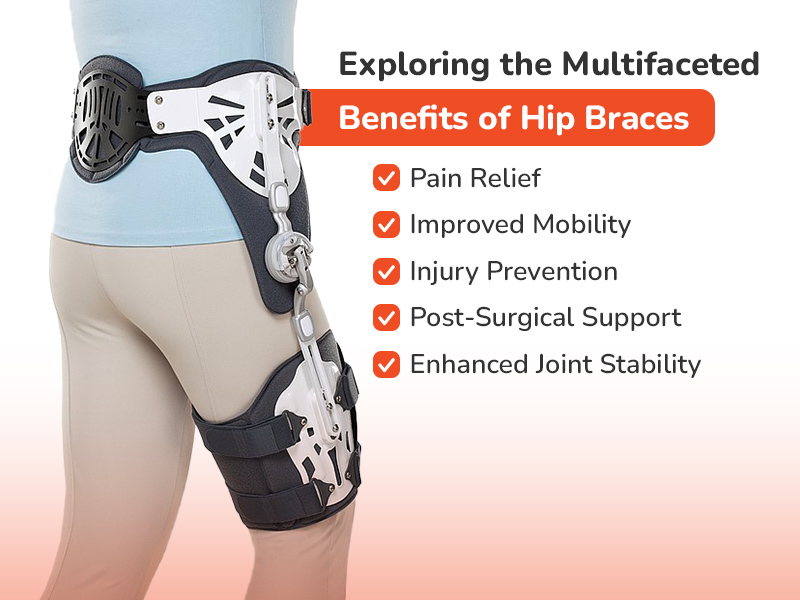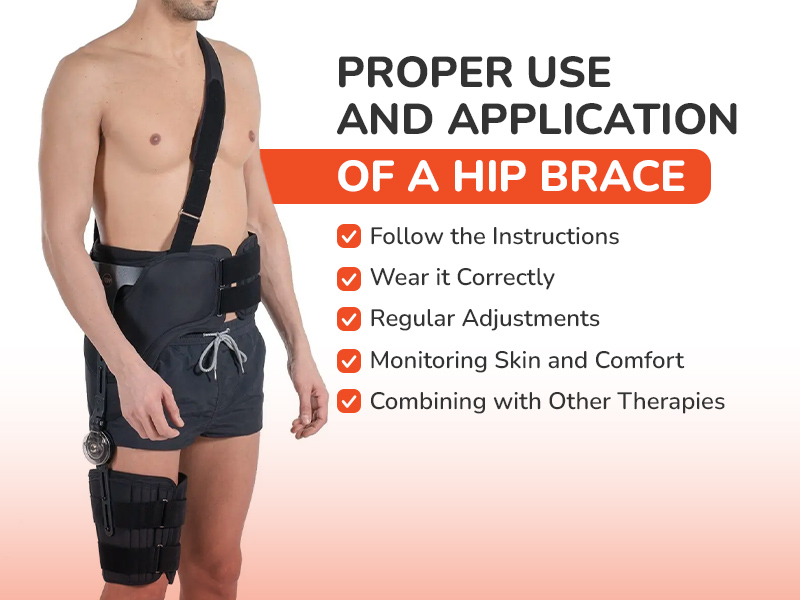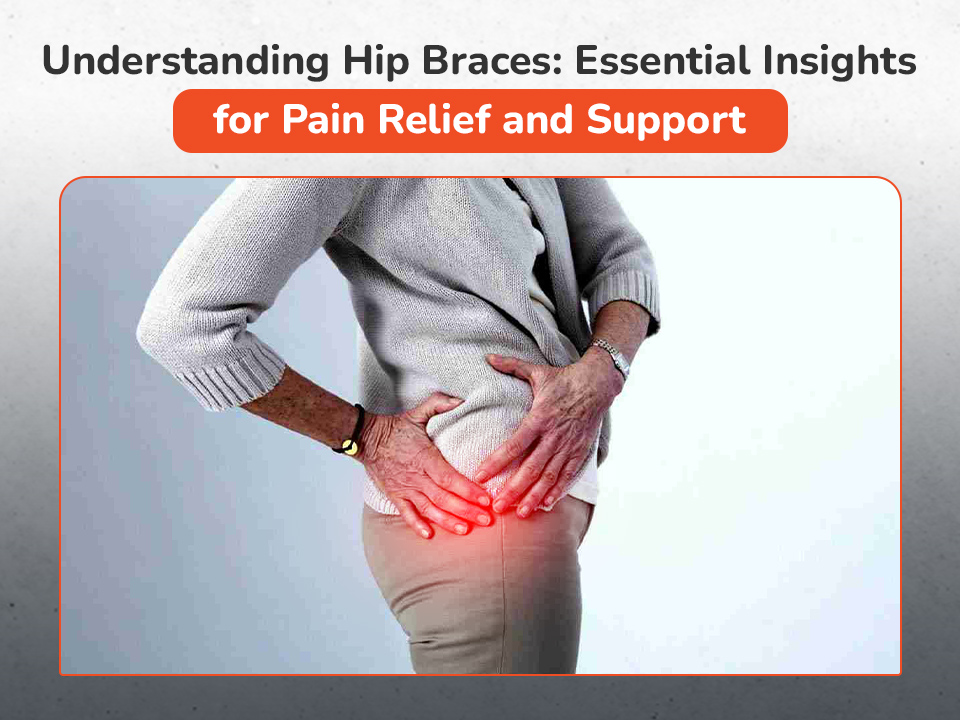Understanding Hip Braces: Essential Insights for Pain Relief and Support
The hip joint, being one of the largest joints in the human body, plays a crucial role in bearing our body weight and facilitating movement. However, it’s also prone to injuries and wear and tear. Hip braces are designed to offer support, alleviate pain, and improve mobility. This article explores the various aspects of hip braces, offering insights into their benefits, types, and proper usage.
The Hip Joint: A Complex Mechanism
The hip joint is an intricate structure comprising bones, cartilage, ligaments, and muscles. It’s a ball-and-socket joint, allowing for a wide range of motion. However, due to its complexity and the load it carries, it’s susceptible to various issues. Age, injuries, repetitive movements, and certain medical conditions can all contribute to hip joint problems. This is where hip braces play a crucial role. They are designed to offer support to this vital joint, helping alleviate pain and facilitate movement, especially in situations where the hip is compromised.
Exploring the Multifaceted Benefits of Hip Braces
Hip braces are more than just support mechanisms; they play a vital role in managing various hip-related conditions, enhancing mobility, and improving the quality of life for those who wear them. Whether it’s for recovery, pain management, or prevention, the advantages of using a hip brace are diverse and significant. Let’s delve deeper into the specific benefits that these braces offer:

- Pain Relief: Hip braces provide compression and support, significantly reducing pain caused by conditions like arthritis or post-surgical discomfort. The compression also helps minimize inflammation, a common source of hip pain, thus facilitating a more comfortable daily life.
- Improved Mobility: These braces stabilize the hip joint, enhancing mobility and allowing for easier, more comfortable movement. This is especially beneficial during recovery phases, such as post-injury or surgery, helping individuals gradually regain their normal movement patterns.
- Injury Prevention: Wearing a hip brace during physical activities can prevent potential injuries by providing additional support to the hip joint. This is particularly crucial for athletes or individuals engaged in strenuous activities, as it helps avoid long-term hip complications.
- Post-Surgical Support: Hip braces are often indispensable in the post-operative phase, ensuring that the joint is appropriately immobilized to promote faster and proper healing.
- Enhanced Joint Stability: For individuals with weakened or unstable hips, hip braces offer enhanced joint stability. They help evenly distribute stress across the joint, reducing the risk of dislocation or further wear and tear and thus contributing to overall hip health.
These benefits highlight the importance of hip braces in various medical and lifestyle contexts, underscoring their role as essential tools in orthopaedic care and recovery.
Diverse Varieties of Hip Braces for Different Needs
Hip braces come in several types, each designed to cater to specific conditions and recovery stages. Understanding the variety available can help you or your healthcare provider choose the most appropriate brace for your situation. Here’s a closer look at the common types of hip braces and their specific applications:
- Compression Braces: These braces are made from stretchable, elastic materials that snugly fit around the hip area. Compression braces are generally used for mild hip pain or discomfort. They provide gentle support and are often preferred for their comfort and ease of movement, making them suitable for everyday use.
- Stabilizing Braces: For more serious conditions that require a higher level of support, stabilizing braces come into play. These braces are more rigid and provide substantial support to the hip joint. They are typically used in cases of severe pain, significant joint instability or during the post-surgical recovery phase to ensure proper healing of the hip joint.
- Hip Abduction Braces: These specialized braces are designed to maintain the hip joint in a specific alignment, usually following surgery or serious hip injuries. Hip abduction braces prevent the joint from moving into positions that could lead to dislocation or further damage.
- Dynamic Hip Braces: Dynamic braces provide a combination of support and flexibility, allowing for controlled movement of the hip joint. These are often used in rehabilitation settings to facilitate gradual recovery of movement and strength in the hip area without overstraining the joint.
- Osteoarthritis Braces: Specifically designed for individuals suffering from osteoarthritis, these braces help in unloading the stress from the affected area of the hip. They redistribute weight away from the damaged part of the hip, providing pain relief and improving the user’s ability to perform daily activities.
Each type of hip brace serves a unique purpose, and selecting the right one can make a significant difference in the effectiveness of treatment and the speed of recovery.
Key Factors in Choosing an Ideal Hip Brace
Selecting the right hip brace involves more than just picking one off the shelf. It’s about finding a brace that meets your specific medical needs and lifestyle requirements. Here are essential factors to consider when choosing a hip brace:
- Consultation with Healthcare Providers: Before you decide on a brace, it’s important to seek guidance from a healthcare provider. They can help determine the type of brace that’s most appropriate for your condition, whether it’s for post-operative support, arthritis management, or injury rehabilitation.
- Comfort and Fit: Comfort and fit are crucial. A properly fitting brace should be snug enough to provide support but not so tight that it restricts blood flow or causes discomfort.
- Material and Breathability: The material of the brace plays a significant role in overall comfort, especially if you’re wearing it for long periods. Look for materials that are soft, breathable, and skin-friendly to prevent irritation and discomfort.
- Adjustability: A hip brace with adjustable straps or closures is beneficial as it allows you to customize the fit according to your comfort level and the support needed. Adjustable braces can accommodate changes in swelling and can be tightened or loosened as required during your day or recovery period.
- Activity Compatibility: Consider your daily activities when selecting a hip brace. If you lead an active lifestyle or are involved in sports, you might need a brace that offers flexibility and movement.
Remember, the right hip brace can significantly aid in your recovery and improve your quality of life, making it a worthwhile investment.
Read More: The Comprehensive Guide to Ankle Braces for Sprain Recovery and Prevention
Proper Use and Application of a Hip Brace
Using a hip brace effectively requires more than just wearing it; it involves understanding and adhering to specific guidelines to ensure it serves its purpose without causing additional problems. Here’s how you can use a hip brace properly:

- Follow the Instructions: Every hip brace model comes with its own set of instructions. It’s essential to read these guidelines thoroughly to understand the correct way to wear and adjust the brace.
- Wear it Correctly: Wearing the brace correctly is crucial. It should fit snugly around your hip but should not be so tight that it cuts off circulation or causes discomfort. The brace should feel supportive without restricting movement unnecessarily. Ensure it sits properly on your hip and doesn’t slip or move around during activities.
- Regular Adjustments: As you go about your day, you might find the need to adjust the brace, especially if you switch between different activities or levels of exertion. For instance, you might tighten it for added support during physical activities and loosen it slightly during rest or less strenuous activities.
- Monitoring Skin and Comfort: Regularly check your skin for any signs of irritation, redness, or discomfort. If you notice any issues, adjust the brace accordingly or consult with your healthcare provider. It’s also a good idea to take breaks from wearing the brace, especially if you’re using it for extended periods.
- Combining with Other Therapies: In most cases, a hip brace is part of a larger treatment plan. It works best when combined with other therapies, such as physical therapy exercises, medication, or lifestyle changes. Be sure to follow your healthcare provider’s overall treatment plan for optimal recovery.
Remember, a hip brace is a tool designed to aid in your recovery or manage pain. Using it properly will help you maximize its benefits and support your journey to better health and mobility.
Common Misconceptions about Hip Braces
It’s essential to dispel common myths about hip braces:
- They Cure Hip Problems: While hip braces provide support, they are not a cure for hip conditions.
- One Size Fits All: Each person’s needs are different, and so is the type of hip brace they may require.
- Hip Braces are Only for Post-Surgical Recovery: While hip braces are indeed beneficial in post-surgical scenarios, their utility extends beyond that. They can be used for pain management, injury prevention during sports, and even as a support for chronic conditions like arthritis. The versatility of hip braces makes them a valuable tool for various hip-related issues.
- Hip Braces Can Be Self-Prescribed: Some individuals believe they can choose and use a hip brace without medical guidance. However, self-prescribing a hip brace without understanding the specific needs of your condition can do more harm than good.
- Wearing a Hip Brace Weakens the Muscles: There’s a misconception that long-term use of hip braces leads to muscle weakening. In reality, when used correctly, hip braces aid in recovery and support weakened areas without necessarily causing muscle atrophy.
Understanding these points can help in making informed decisions about using hip braces and in setting realistic expectations about their benefits. Remember, a hip brace is a tool to aid recovery and support, not a standalone solution to hip problems.
Conclusion
Hip braces can be instrumental in managing hip pain and enhancing mobility. By understanding their types, benefits, and proper usage, you can make an informed decision about incorporating a hip brace into your care regimen. Remember, consulting with healthcare professionals is key to choosing and using a hip brace effectively.

